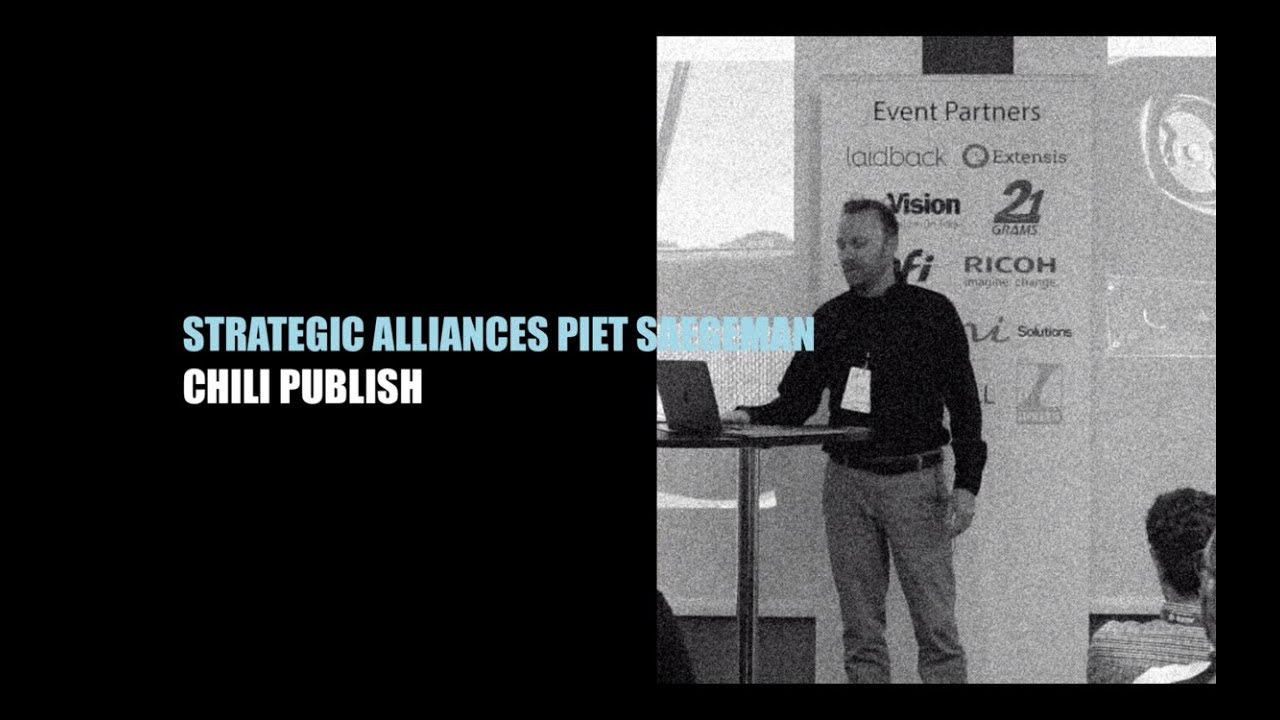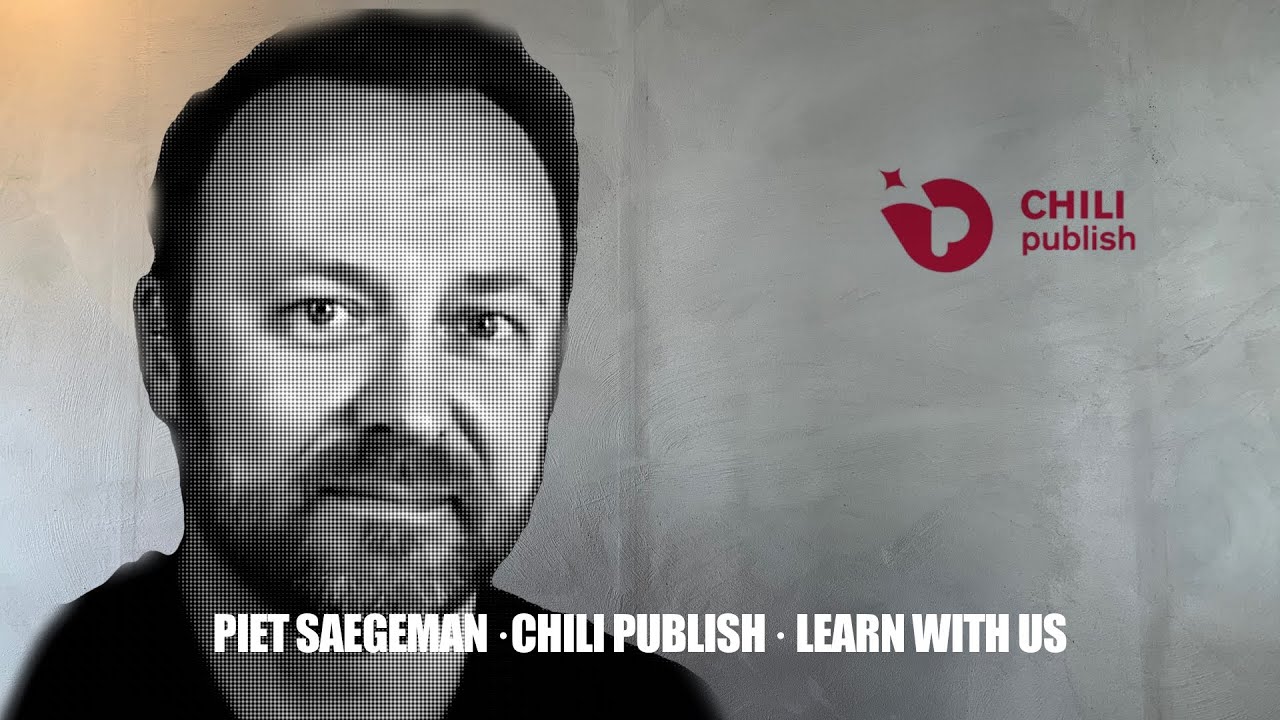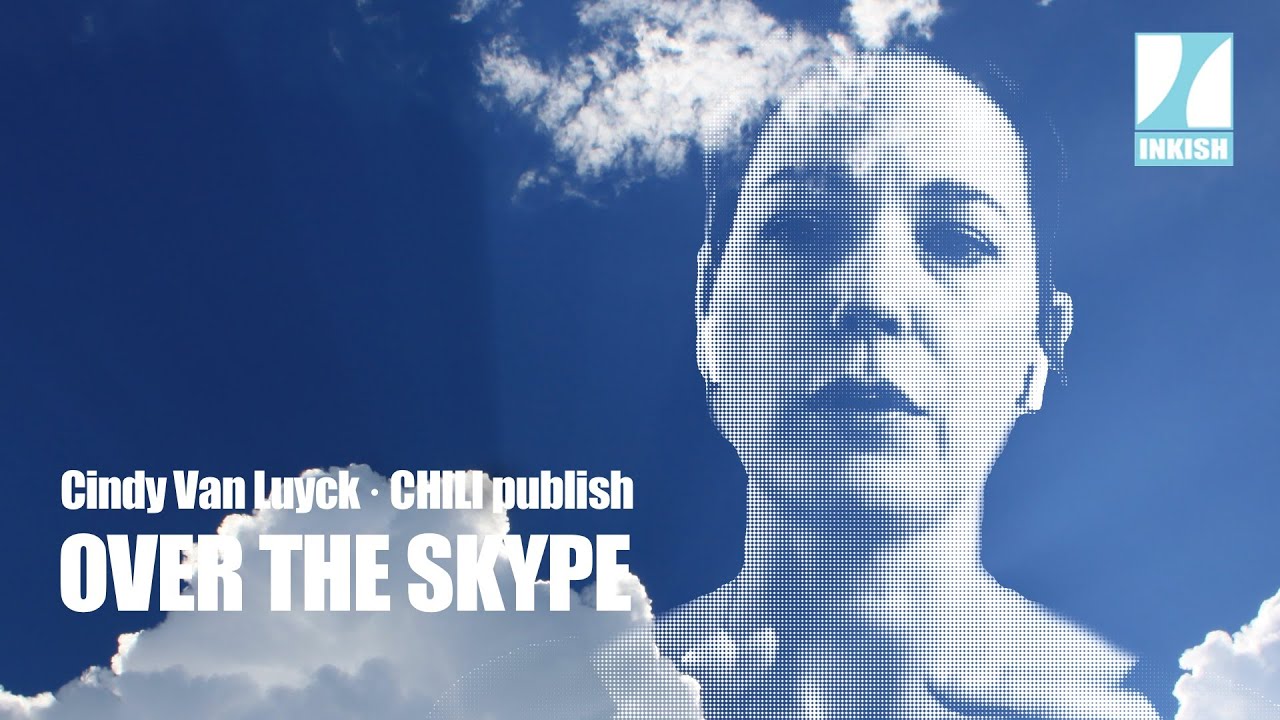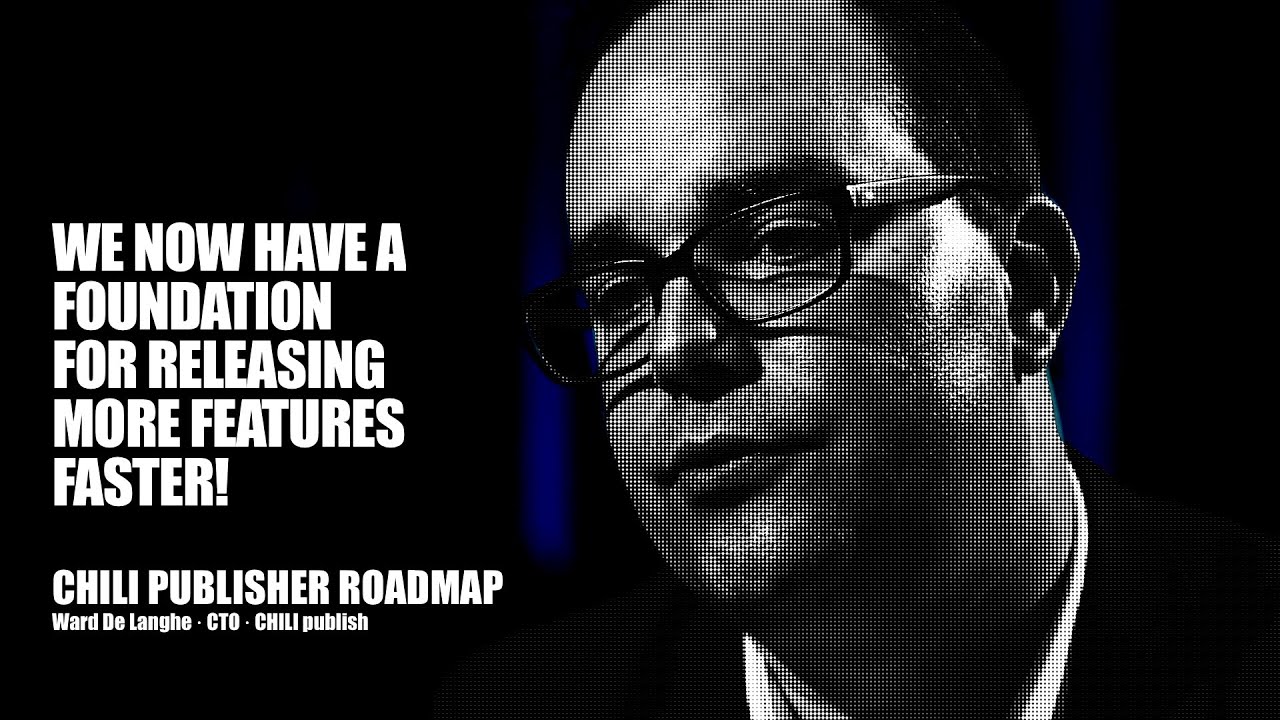Strategic Alliances Piet Saegeman · Chili Publish · Workflow Summit · Stockholm, Sweden
Feel like an astronaut all strapped in here. … Hang on.
Test that? Is that better?
You hear me? Very good. Sorry. Last … gear. Not used to this. Hi Freddy. So my name is Pete. I do strategic alliances at Chili Publish, a Belgian software company.
And today I would like to talk to you about how you can optimize your starting point. Once I get the mic.
So, does anybody here know why Porsches have their ignition key on the left hand side of the steering wheel or for the Brits on the right hand side of the steering wheel? It’s because of this, the standing start at Lamont, the world famous thing.
Gentlemen, start Your engines. No women were racing in that era. But Gentlemen, start Your engines and people would jump into their cars and drive off. So they weren’t ready at the starting point. They were just parked.
Give you an example, this is the 1969 one. Notice the guy slowly walking to his car going like “I’ll catch up later.” He was of course Belgian. Here he is again, winning that race. The first of six victories.
So he was a very, very good driver. And a made a good name for himself. Let’s explore what Porsche was thinking when they moved the ignition key from the right hand side to the left hand side. Raise your hand to show me with which hand you started your car this morning.
Raise your hand with which hand you engaged your first gear this morning when you drove off. Same hand. That’s a sequence.So Porsche said, “Once we get out on the track, it’s pretty much a level playing field. The rules have made it so that the engines are the same size. The cars are about the same power. The drivers are almost the same, it’s the only way you can have a long race and keep it interesting.”
If there was a big difference, that race will be over in two hours. So 24 hour race to said, “Well as soon as we get off the start, it’s a level playing field.” If your car didn’t break down or you didn’t crash, there was not a lot of difference. But they said “If we take that starting procedure of jumping in the car, starting the car with one hand at the same time, engaging the first year, that shaves off half a second and that gives us the headstart in that race.”
So the major gains were held at the start, unless the Belgians were racing as you’ve seen that changed things a bit. So where can we find efficiency gains in our process, in our graphic production process? Where do we find the maximum impact? Is it workflow? I kinda doubt it because the technology is mature.
We have been doing this for 25 years. We’ve kind of gotten good at this workflow game. The processes are optimized as they are and the hardware is no longer limited. I remember times when we worked together where you sent a postscript to a device and you prayed and you waited for 15 minutes and if there were no stack overflows or there were no postscript errors, you actually go a file out you could expose.
That’s all done now. I’ve got a device with me that’s more powerful than servers five years ago. So it’s a level playing field. There’s no major improvements to be held there. Is it print production? I doubt it, because you’re handling atoms. And unlike bits and bytes, atoms have limitations called physics on them. There’s only so much you can do before you’re bumping the laws of physics and you can’t really go beyond those yet.
So the technology is mature and the playing field is level. So where are we going to find it? So what we’re trying to do here is get a major gain. Look at something that is optimized like that car is like the same kind of technology of spaceships. And say, “How can we take this car and make it instead of 24 hours, I had to do the race in three hours.” Same distance. Can we do that in graphics?
It turns out we can, but we have to conquer a serious problem. I’ll give you an example. Suppose you’re a brand owner and you want to launch a new product. Well, I can guarantee you that is a mountain of work. And people have heart attacks trying to do it. The reason is not workflow. The reason is not print production. Those things are optimized.
The reason that is what comes just before that, the graphic design cycle. I’m not going to ask you to raise your hand because I have 100% agreement here. Raise your hand if you … I would ask, raise your hand if you had ever had to wait for a designer. So, that’s where it goes wrong.
You start out with a design brief, you tell everybody what you want. You explained the brand identity guidelines. There’s a whole creative process. There’s a lot of manual work using specialized tools like InDesign or Illustrator. It goes through a number of cycles in the review and then you make the izations. We call that izations at Chili.
And that’s everything that has to do with special versions of the same file. Languages or localized versions or adaptations or customizations for specific markets. So if you look at it, you start digging up your product shots. Where are the product shots? Good question. Maybe Dropbox, maybe One Drive, maybe SharePoint, maybe all of the above. I don’t know.
So they start digging that up and that takes awhile. Sometimes they don’t find them and they have to hire a photographer, get some product, get it shot and get it retouched and you’re like a week and a half later, at best. You have to find all the other images, background images, logos, et cetera. Where are they? Oh, they’re on a hard drive here. They’re on Dropbox there.
Nobody really knows unless you have a dam. I know that … here. They can tackle this problem very, very easily. Then you have to have copy. Copy in different languages and then you put some more [ipsa 00:06:18] minutes because it’ll be fine, but then German is longer than English and you create new design problems as the new copy arrives.
And you go for product specifications, is it correct? Some of the products you do are very simple, but some of the products are insanely complex. A pot of yogurt has like a regulatory information, has calories, has carbohydrates. It’s like more complex than some technology products.
If you’re buying a mining truck from Volvo or a diesel engine from the Volvo Penta, there’s a lot of specs there. How many tons on it? How much pressure in the tires? All that gets managed somewhere and you have to get it into that document even if it’s as simple as a flyer.
So you give all that stuff to an agency and you hope for the best because the agencies are professionals and they have a reputation for always delivering on time. So you give it to the agency. The question is how do you give it to the agency?
There’s two ways of doing that. Either you give them access to your systems, which is not always easy because you have to manage that access. How long is it for? Who’s it for? Are they going to pass the password on amongst themselves and get access to your systems without authorization? Or even worse?
Let’s just put everything on a hard drive and just give it to them. And then you’ve got like a duplicate somewhere. And there may be version changes that nobody’s aware of. So giving people access to your data to do the graphic design cycle, is a bit of a nightmare.
The design process begins. They do their magic, they create all the documents, and at the end of that you go into the approval cycles. It has to go through all layers of an organization to get approved. It has to go all the way back down. It goes through a couple of cycles. Hopefully no spelling errors are left and we’re good to go. Or so we think because then the Varian production starts.
I need a special one because it’s for the French market. I need a special one because it’s for the Japanese market. I need special one for this product, which is not available in the French market and is illegal in the German market.
It just gets mindbogglingly complex and it turns into a production line. You get the designer who’s a creative guy doing really boring, repetitive work. He’s basically designing what he’s already designed 50 times in different languages. It takes a lot of time, takes a lot of effort. It’s not efficient. There’s too much manual work. There’s a lot of margin for error there, so there’s a lot of opportunity for errors to sneak in.
I know a STAT from ESCO that says like over 70% I don’t know the exact number, but over 70% of all errors in packaging are typos. People copy pasted something and forgot a bit or they typed into somewhere.
In packaging, that’s a nightmare. It’s very difficult to control because we’ve had access or duplication and it’s at a very, very high cost. So a lot of brand owners are looking at this and saying, “Well we’ve optimized all the rest of it. This is our next step.”
So, we’re in a privileged position at Chili Publish because we see all these different brand owners implement the system in different ways and we learned from all of them. And we’ve seen that they all create some significant gains at the start of their workflow.
So our software is called Chili Publisher, You’ve probably heard of it, some of you, maybe. We create an online document editor that makes the generation and creation of artwork and marketing materials a lot more easy.
We do that in a couple of ways now. This is what it looks like, looks very familiar to the desktop applications you have has a very large feature set. And we call it the universal graphics engine because we’ve seen it do everything. Going from prints to packaging to brand management to online stuff. So any combination of those three columns we can build. If you want to do branded artwork generation, we can do that. If you want to do template driven label customization, we can do that as well.
And there’s a couple of themes that we’ve seen and what we notice is that nobody’s talking about this in graphics. The brands are, but the graphic production guys aren’t, yet. The brands are the early adopters. It makes sense for an agency not to be the early adopter for this because they’re selling hours.
They don’t want to optimize or the more blocks of hours they can sell, the better for them. It does require some highly specific technology. Most of the technology you have here, there’s some representatives in the room. There’s Toby here, from extensive. There’s Ismial and her team here from Delhi. But the gains you get are enormous. I’m talking double digit reductions.
We actually got in trouble during one of our events because onstage, somebody named a brand and how many percent savings they had in their graphic production. It was 93%, something like that. So we got a call like “Don’t ever say that in public again”, so I won’t divulge who it was and what the exact number was.
And the ROI for a brand is very, very quickly. For any company that has any kind of graphic workflow, the ROI is very, very quick. There are three areas of interest that we noticed have an immediate impact.
First of all, you begin working with templates. You stopped working with documents, you begin working with templates. And second step is you use curated content, not just something you get from a customer that’s copy pasted. And you automate some of the artwork production.
We’ll look into a little more detail. So templates protect the brand and allow people to build their own documents, even if they’re not graphics professionals. If you look at any document, there’s a number of different elements in this document. If you look at it in detail, there are things like text. There’s things like images, there’s things like the background images, logos, vector shapes, all of that are just elements that are on that page.
And what makes a brand, a brand. What makes that a design? Well, that’s the relationship between all those things. They’re at a specific distance in a specific point repeatedly so that makes up the design. And those relationships we can encode in the template, so that the template kind of generates itself and the design process is handled by all of these rules and guidelines.
And finally in that template you’ve got variables, variables that allow you to change things. Things like colors, things like text, things like languages in the same template can be changed automatically without having to create a new file. That’s the DNA of artwork for us. And that allows users to generate their own artwork because they’re in a protected environment. It’s like lane assist on a car.
The modern cars, you kind of drift a little bit, it’ll tell you like you’re drifting. I personally really thankful to Volvo because on the way here, on the way to the airport, the automatic braking system saved my car. There was a Volvo behind me. So that’s really cool.
Assisted driving, we talk about assisted design. And the brand has always protected. The design has always protected because it’s embedded in the brand identity guidelines.
The second thing is curated content to eliminate errors. You eliminate errors by using single source of truth information. And that’s a very important point. The more you can centralize that data and curate it in one central place and give people access to that, the fewer errors you will have because you’ll have one person responsible for that. And that’s it.
If you look at the same document, we looked at the components of it, the relationship between the components, but where does the information come from? Well, some of it comes from your digital asset management, your logos in your dam, your images and your dam, your background is your dam.
Some of that comes from your product information management system. That’s all the information about the product. Where’s it brewed, how many percent alcohol does it have, etc. The slogan itself comes from a content management system, a marketing resource management system, systems galore.
And then you’ve got your pricing. Your pricing is determined by your ERP system and there’s some regulatory information. This drink is legal in the US at 21, in Europe at mostly 16 for beer and certain countries, 18. So all of that comes from a different source.
And then finally you’ve got a QR code that will link back to your marketing automation system. So you’ve got a lot of systems that can supply information to a design to help designers build it. The result of that is you’ve got no more typos. You’ve got no more content errors. And any change to any of those information sources gets updated immediately once you open the document again.
And then finally the big one artwork automation. That was the production line thing, that gives you a lot faster time to market because if you think about it, let’s say you want to build a banner. And you’ve got different versions of it, like all of these versions have a different design. And they’re depending on what … do you want to produce? Is it for digital? Is it for mobile? Is it for online? Is it for eCommerce?
If I buy a product on Amazon, the preview of that on my phone is about that big. The typical image that you see on a large website doesn’t work because I can’t read it. I don’t know how many milliliters is in the bottle. I don’t know how many eggs are in the basket. I have no idea.
So they make special ones for eCommerce. Localized one and for markets, for specific markets and you change them for different product lines. So if you look at a simple thing like a banner, a simple online banner. Just one channel, one product, one language. Well there’s different sizes and that’s already five different designs that you have to do as a designer.
Then you go for different markets. Good. That’s already 20. Go for different products. You’re going into the hundreds very, very quickly.
POS materials, that’s another one. You’ve got a chain of stores, not every store has the same kind of window space. Do you really want to do these kinds of designs by hand or do you want a template that will automatically adapt to the size of the window that it needs to be used for?
So that takes away a lot of the work and production. So that you can really start producing at scale with a much shorter time to market. And just huge cost savings. We’ve seen production processes for the graphic design area go from weeks to hours. So the savings are enormous for these customers.
Here are some customers that have done this successfully. You know, CLASS the big agricultural machines? Like highly complex things and they said, “Well, we’ve got 20 countries, huge workforce”, and they all use the same kind of template to present information, be it online or in print.
Can Design is an agency in Antwerp, in Belgium. And they can do print ready stuff in 10 minutes instead of waiting for all this corporate approval. And Brilex is a very complex project. They have paints and lacquers, so chemistry. And they also have a network of 30,000 resale points that all have to do their own graphic design.
They’ve enabled a self service successfully with them. A couple of other brands You’ll notice probably some Nordic brands here. So we’ve talked about optimizing the starting point. And the starting point can be optimized in three different ways. One, you start using intelligent templates by using software like Chili Publisher and enabling self service.
Number two, use curated content from whatever systems there are. Just make sure they’re single source of truth. This could be a PIM system, a dam system can be Excel for all we care, we’ve actually seen it done with excel. And you start automating your artwork production to save time and reduce your time to market.
That kind of wraps it up. So to say goodbye, I’m going to show you another example of somebody optimizing their starting point. This is the last moments of an American football match. I don’t understand the rules. I just know that they have to go from one end to the field to the other and they get chased by everybody.
So again, here level playing field. All these players are roughly the same scale, the same speed, the same weight, or they wouldn’t be in that match. So how does this team optimize their starting point? Watch this.
One guy just sits there, gets up, all the others, go like what? And then he bolts. If you think about it, this is exactly what we’re trying to do with graphics because the rest of that game we’ve played for the last 25 years. But if you can make the difference in those first moments, if you can reduce it there and do the speed reduction and do the optimization, that’s where you win.
Thank you.








































































